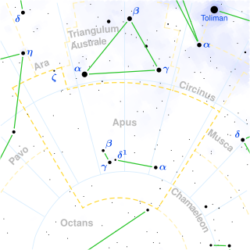Future Car Technologies – Alternative Fuel Vehicles
An alternative fuel vehicle is a vehicle that runs on an energy source other than conventional petroleum fuels (petrol or diesel). Due to a combination of factors, such as environmental concerns, high oil prices and the potential for peak oil, the development of alternative energy sources for vehicles will increase in the future. This article will list all the major currently existing alternative energy vehicle technologies.
Astronomy Picture of the Week – NGC 1999 Nebula
This photo of nebula NGC 1999 was taken by the Hubble Space Telescope in December 1999. It is a good example of a reflection nebula. Just like fog around a street lamp, a reflection nebula shines only because a light source illuminates its dust and the nebula does not emit any visible light of its own. The main light source of this nebula is a recently formed star, visible in this photo near the center. This young star is cataloged as V380 Orionis, and its white color is due to its high surface temperature of about 10,000 degrees Celsius (nearly twice that of our own Sun). Its mass is estimated…
Non-Rocket Spacelaunch – Tether propulsion
Tether propulsion consists in using long, very strong cables (known as tethers) to change the velocity of spacecraft and payloads. The tethers may be used to initiate launch, complete launch, or alter the orbit of a spacecraft. This form of propulsion would be significantly less expensive than spaceflight using modern rocket engines.
Future Car Technologies
New cars are being developed in order to make them more sustainable, safer, more energy efficient, and less polluting. These won't exactly be the cars we've seen in science-fiction movies, but they should be a big improvement over what we have today.
Non-Rocket Spacelaunch – Space Elevators in Fiction
This is the fourth and final part of the space elevator article of the non-rocket spacelaunch methods article series. This post will focus on references to the space elevator concept in fiction. The first mention of anything remotely similar to a space elevator was the beanstalk in the children's fairy tale called Jack and the Beanstalk, published in 1807.
Non-Rocket Spacelaunch – Extraterrestrial Space Elevator Concepts
Space elevators, a futuristic concept, could be adapted for various celestial bodies: Mars, the Moon, and even asteroids, they promise a revolution in space access.
Astronomy Picture of the Week – Helix Nebula
This eerie picture captured by the Spitzer Space Telescope shows the Helix Nebula, also known as NGC 7293. It is located 700 light-years away in the constellation of Aquarius. The two light-year diameter shroud of dust and gas around a central white dwarf is the result of the final stages in the evolution of a sun-like star. Dust particles are what makes this cosmic eye look red. Image Credit & Copyright: NASA, JPL-Caltech, Kate Su (Steward Obs., U. Arizona), et al.
Non-Rocket Spacelaunch – Space Elevator Safety Issues
The space elevator is a gigantic concept and as such it has many safety issues that would have to be resolved before construction begins. A space elevator would present a navigational hazard, both to aircraft and spacecraft.
Non-Rocket Spacelaunch – Space Elevator
Why non-rocket spacelaunch? Because the current chemical rockets are really expensive. In order to further explore outer space and establish a permanent human presence in space we need more cost efficient spacelaunch methods.
Astronomy Picture of the Week – 2010 Lunar Eclipse
Last week, on December 21 we witnessed a lunar eclipse. Below are some pictures of the eclipse: Image Credit & Copyright: Chris Hetlage Image Credit & Copyright: Itahisa N. González (Grupo de Observadores Astronómicos de Tenerife) Credit & Copyright: Jerry Lodriguss (Catching the Light)
Apus Constellation
Apus is a faint constellation in the southern sky. Its name means “no feet” in Greek and it represents a bird-of-paradise, which were once believed to have no feet. It was one of the twelve constellations created by Petrus Plancius in the late 16th century. The first known depiction of the constellation in a celestial atlas was in Johann Bayer’s Uranometria of 1603. Bird-of-Paradise after which the Apus constellation was named. Credit & Copyright: Roderick Eime. For more constellations see the Constellations Guide.
Astronomy Picture of the Week – Carina Nebula
This is a picture of the Carina Nebula, also known as NGC 3372. It is a huge nebula spanning over 300 light years. The dark shapes you can see in this image are actually clouds of molecular gas and dust so thick they appear opaque.












